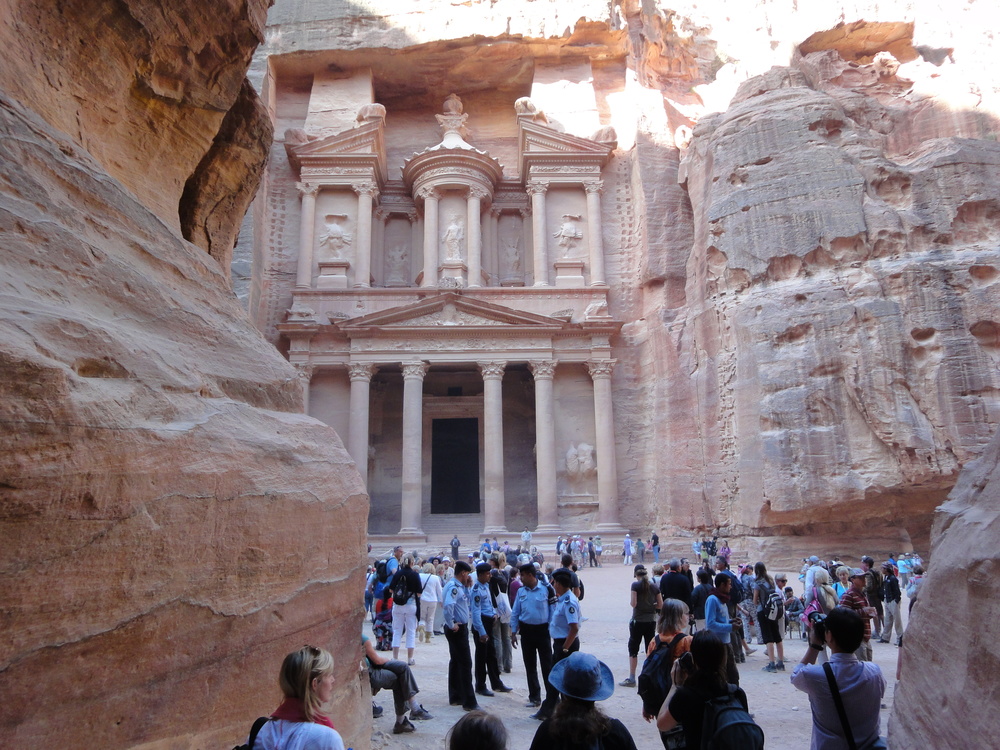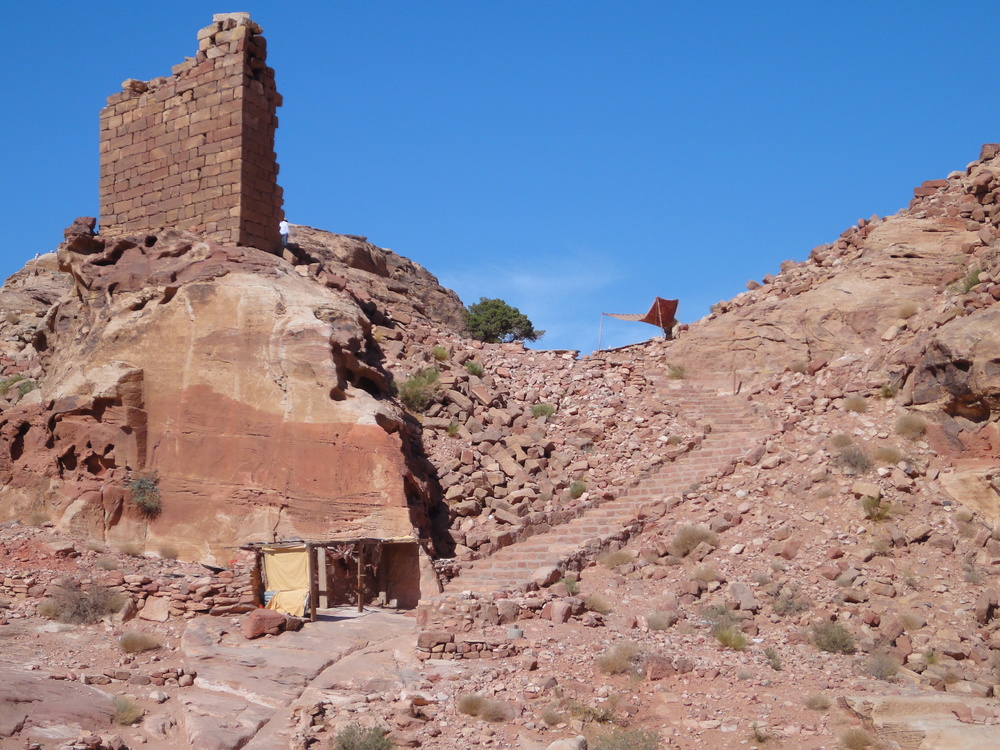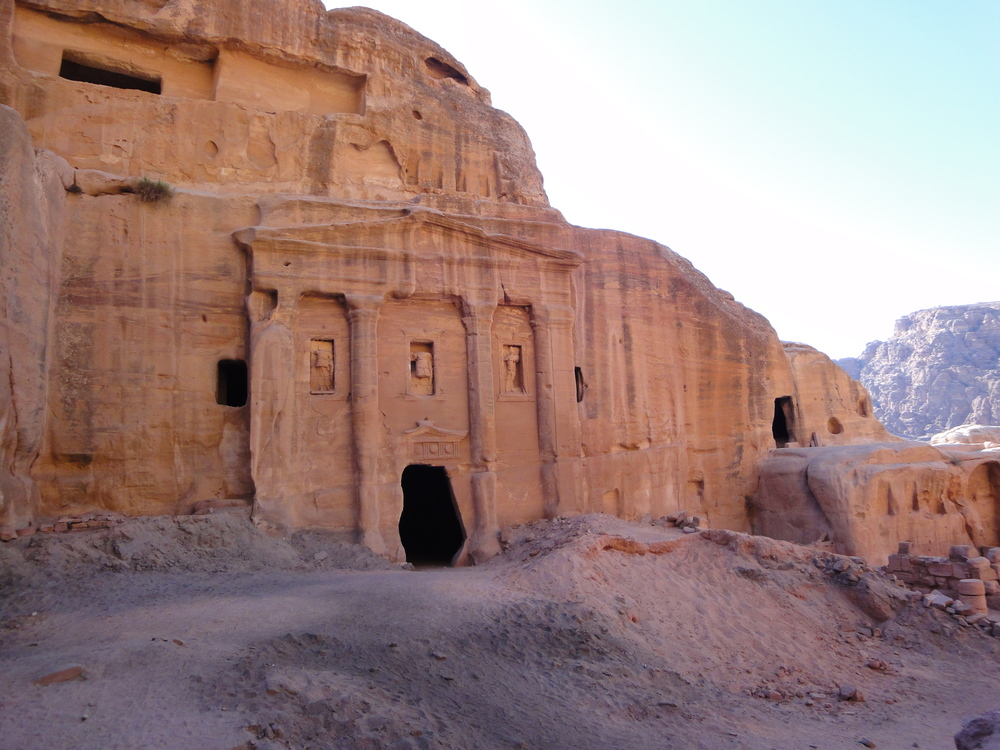We’re waiting patiently in the visitor centre. It’s 8.00am and a dry heat is rising outside. Tourists are crammed in every corner. If they don’t have a seat, they’re sitting on the tiles or standing to converse with newfound friends. Our guide hands us our passes; mere pieces of paper that will grant us access to one of the world’s man-made wonders – the ancient city of Petra in southern Jordan.
We step outside and stroll along a dusty gravel path. The smell of poo hangs heavy in the air; a handful of tourists have opted for camel rides to avoid wearing out their feet too early in the day. Camels are led along by Bedouins, previous inhabitants of this hand-chiselled miracle.

Bells shake and ring from horse-drawn carriages barraging their way onward at an optimistic speed. It’s here that our walking tack is sheltered by an over-towering rock face. At an instant, we can see layers of striking colour in the sandstone – ribbons of peachy red and charcoal curve eloquently to lead us the way. It’s the mouth of the gorge known as The Siq, our only way in (and out) of Petra.
Within a matter of footsteps, we feel the temperature drop. Smooth walls nestle us along our journey as we pace our way through centuries of water-moulded turns. Our ambient stroll is suddenly interrupted by a flurry of excitement. We edge around one final corner before we’re greeted by a sky-scraping palace. It’s the most famous structure which was meticulously carved by Nabataeans over 2,000 years ago – The Treasury.
Petra was inhabited by Bedul Bedouins and they’ve maintained a trade from visiting tourists. The hand-carved caves that pepper Petra became the homes for generations of Bedul families and even New Zealand born Marguerite van Geldermalsen who first arrived here in 1978 as a tourist. By the 1980’s, Petra’s indigenous population was forcibly relocated to a nearby concrete city, Umm Siehoun, as a way of preserving the area. Now, only ginger kittens jump and play along the footsteps leading into The Treasury.

We set out for major sights like Nymphaeum and temples lining the Wadi Musa. We cross many cave doorways that welcome us to the dawn of time. We push on and find the steps leading to the High Place of Sacrifice, a steep 25-minute stair-climb that showers us with welcoming shade. Blankets held up by dry branches dot the trail for Bedouins who offer us souvenirs, cool drinks and tea. We’re met by a flat plateau that is mounted by an ageing platform, the site of many sacrifices in Petra’s early history. Panoramic views reveal the sheer breadth of this abandoned city.
A secluded path coaxes us back to ground level, almost a secret stairwell that draws us through to a lesser visited cul-de-sac. We find the Garden Tomb, Lion Monument and Tomb of the Roman Soldier. We breathe in moist cave air that nourished many families before us.

Sunlight starts to scurry away behind the walls of Petra. We hustle past tourists to make it back to the bus before all light is lost, satisfied with the ground we covered. We even found a way to experience its beauty without the masses.
Did you enjoy this post? Keep up to date with all things Fire & Tea by either subscribing to the newsletter or liking the Fire & Tea Facebook page.

